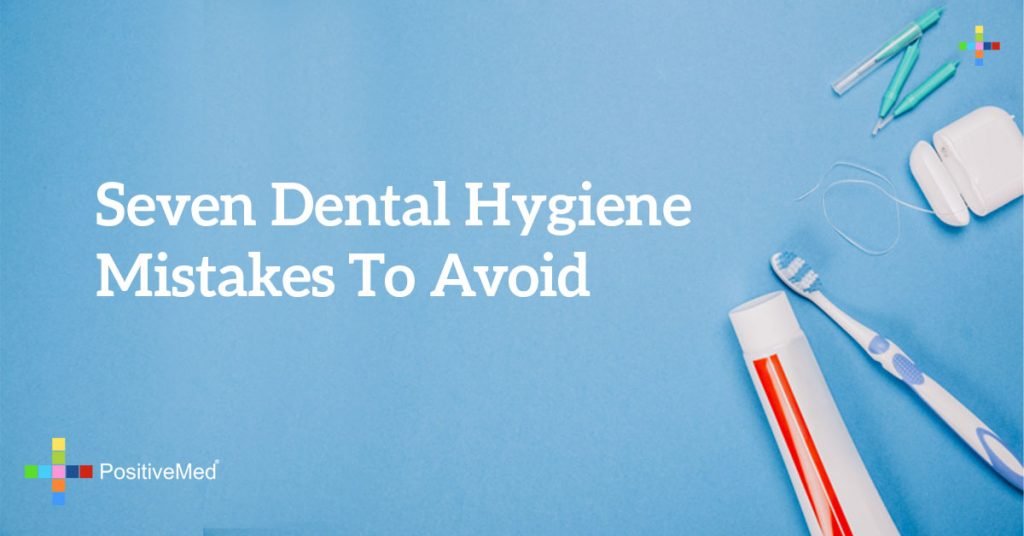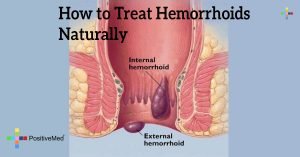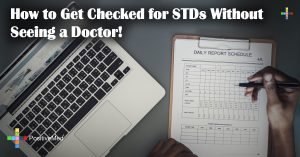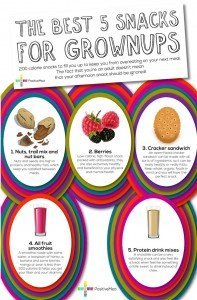
Caring for your oral health is a lot like caring for your car. Regular maintenance is essential to avoiding complications and keeping your mouth in top shape. However, like any well-meaning DIY car owner, you might end up hurting your mouth more if you try to maintain it without knowing what you’re doing. In order to help you care for your gums, teeth, and mouth without harming them, here are seven common dental care mistakes to avoid.
1. Using the Wrong Toothbrush
Sometimes we approach brushing our teeth like we would buffering a floor: we might think that we need to use big, hard-bristled brushes if we really want to get the stain and bacteria off our teeth. However, these brushes may actually be doing harm to our teeth.
Dentists recommend that most people use a soft- or medium-bristled brush to clean their teeth. Hard-bristled toothbrushes may scrub plaque off our teeth, but they may damage your tooth enamel in the process.
Also, hard bristle brushes can do a number on your gums, leading to potential gingival bleeding, damage, or infection. For optimal oral care, choose a soft-bristled toothbrush that fits the size of your teeth and mouth.
2. Not Brushing Long Enough
Even if you brush your teeth the recommended two times a day, you still might not be cleaning them enough. Why? Well, many people think brushing their teeth means doing a couple brush strokes on each tooth and finishing in 10 seconds.
In reality, dentists recommend that we brush our teeth for two minutes a session. You should devote about 30 seconds to each quadrant of your mouth, making sure to brush the front, chew-side, and back of your teeth.
A good trick to ensure that you’re brushing your teeth long enough is to sing “Happy Birthday” or your ABCs twice before you finish. If you don’t brush for the recommended amount of time, you likely won’t remove the plaque and enamel-killing bacteria on your teeth’s surface.
3. Brushing for too Long
On the flip side, you won’t do your teeth any favors if you brush for too long. What some people might see as proactive and dedicated is actually harmful to your teeth. Excessive brushing can contribute to something known as toothbrush abrasion, which is the gradual erosion of tooth enamel.
Toothbrush abrasion can be extremely uncomfortable, as it causes increased tooth sensitivity. This is also why it’s important to choose wisely when you’re picking out a whitening toothpaste – they use abrasives to get rid of the stains on your enamel’s surface. You may not notice it right away, but you will when you’re wincing after a bowl of ice cream or hot soup.
4. Brushing too Soon after Eating Certain Foods
If you haven’t experienced the horror of coffee breath, you should know that it can be pretty brutal. If you’ve finished a tall cup of Joe, you may be tempted to brush right away to freshen up your breath, lest you scare away every person you talk to for the rest of the day.
However, brushing right away could spell trouble for your teeth. Some foods and drinks, like coffee and OJ, are very acidic, and acid temporarily softens your tooth enamel. Softened tooth enamel is more vulnerable to damage, so brushing could potentially erode or remove tooth enamel while it is in this weakened state.
Fortunately, this softened tooth enamel is only a temporary condition. If you drink a glass of tap water, rinse your mouth out, and wait 30 minutes, your enamel should return to normal and be safe for brushing. If you want to avoid acid breakdown when you drink things like coffee, wine, and OJ, use a straw
5. The Only Dental Care You Do is Brush Your Teeth
For most people, oral care is synonymous with brushing our teeth. However, tooth-brushing is just one part to having a healthy mouth, as we also need to care for our gums, tongue, and oral tissue.
A good oral hygiene routine will also include regular flossing and tongue brushing, as well as gentle gum brushing to help manage bacteria. There are just as much, if not more, bacteria on our gums and tongue than there are on our teeth, so cleansing these areas are essential to keeping bacteria in check.
Another important component of oral care is a good diet. Certain bad bacteria thrive on sugary and starchy foods, so reducing these foods can help you avoid cavities and gingivitis (among other things). Certain foods also promote the growth of healthy bacteria, which help clean our gums and teeth, as well as manage the growth of bad bacteria.
6. Using the Same Toothbrush for too Long
You might think that a toothbrush is good to use as long as the bristles are still attached to the brush. However, if the bristles on your brush look like they’ve been squashed under an anvil, you probably need to look into a new brush. As the bristles on a brush become frayed, they lose their ability to remove plaque and bacteria from your teeth.
A good rule of thumb is to replace your toothbrush about every three months. Doing so will allow you to get the most out of brushing your teeth. The s
7. Not Flossing
It’s safe to say that the amount of people who brush their teeth daily is much larger than the amount that
The bacteria on our teeth often feed off two things: tooth enamel and the food we eat. If food debris and plaque are allowed to collect between our teeth, the bacteria colonies there may explode in size, which could mean more bacteria eating away at your tooth enamel. Flossing also stimulates our gums, which keeps them in optimal health.
Failing to floss could mean cavities and gingivitis, which means hefty dental bills and tooth pain. If you’re having a hard time committing to a full four to five minutes of flossing daily, check out an oral irrigator. They tend to clean just as well but can reduce flossing time down to 60 seconds.
If you avoid these common mistakes, you’ll be well on your way to a healthy and happy mouth! It’s that easy.
Disclosure Policy:
This blog is a collaborative blog written by a group of individuals. This blog accepts forms of cash advertising, sponsorship, paid insertions or other forms of compensation. The compensation received may influence the advertising content, topics or posts made in this blog. That content, advertising space or post may not always be identified as paid or sponsored content. The owner(s) of this blog is compensated to provide opinion on products, services, websites and various other topics. Even though the owner(s) of this blog receives compensation for our posts or advertisements, we always give our honest opinions, findings, beliefs, or experiences on those topics or products. The views and opinions expressed on this blog are purely the bloggers’ own. Any product claim, statistic, quote or other representation about a product or service should be verified with the manufacturer, provider or party in question. This blog does contain content which might present a conflict of interest. This content will always be identified.





